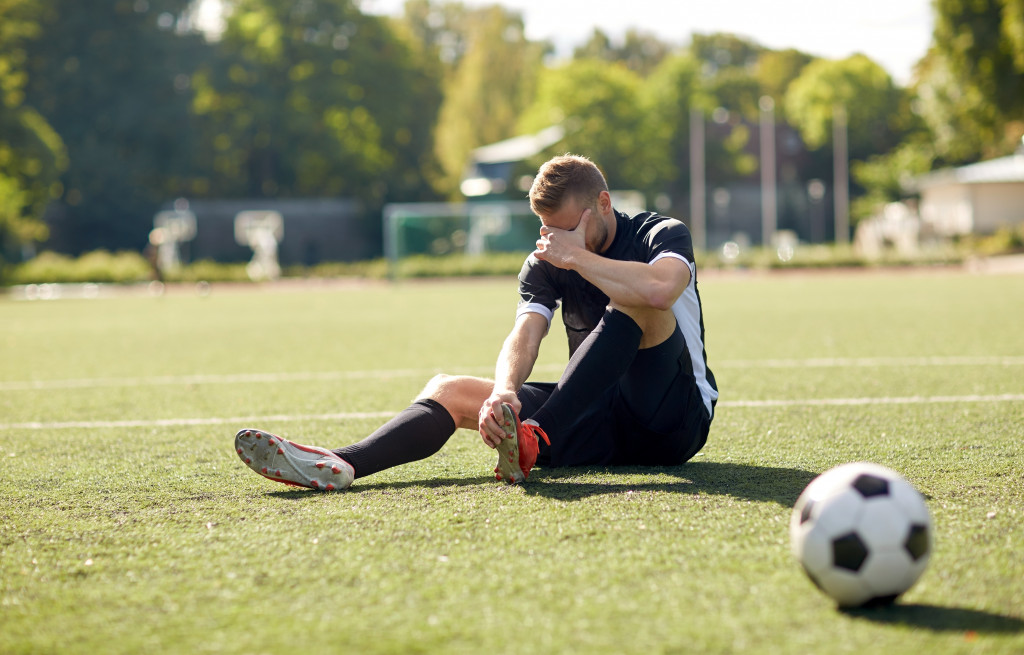Injuries are part of the game, whether you’re an amateur athlete or a professional. Injuries may range from minor sprains and strains to more serious ligament tears, fractures, and even traumatic brain injuries. Whatever type of sports injury you have sustained, it’s important to take adequate time for recovery and follow your doctor’s advice. Here are some tips that can help you with the process:
Consult a Qualified Healthcare Provider
It is essential to see a qualified physician or sports medicine specialist when you first sustain your injury. They will be able to accurately diagnose the problem, provide treatment options and recommend rehabilitation programs that are best suited for your particular injury. Here are some other healthcare providers you may want to consult after a sports injury:
Physical Therapist: They can provide exercises and treatments that help speed up recovery and reduce the risk of re-injury
Massage therapist: Soft tissue massage can help break up scar tissue, restore normal range of motion, and improve circulation
Chiropractor: They are trained to assess and adjust your spine and joints. They can provide treatment that helps reduce pain and improve the range of motion.
Take Time to Rest and Recover
When it comes to recovering from a sports injury, rest is one of the most important steps you can take. Trying to “push through” the pain may be tempting, but this could lead to further injury. If your doctor advises rest, take their advice—it will help your body heal more quickly and reduce your risk of re-injury.
While resting, you can also practice gentle stretching and range of motion exercises to help keep muscles from becoming stiff. If you’re ready to start working out again, talk to your doctor and physical therapist so they can help you progress slowly and safely. However, if your body is still experiencing pain or discomfort, it’s best to take more time off. Pushing your body immediately after an injury can cause more damage. If you return to the sport too soon, you’re also at a higher risk of injuring yourself again or even worse.

Follow a Rehabilitation Program
Once your doctor has cleared you for activity, following a rehabilitation program tailored specifically to your injury is important. This could include physical therapy, strength training, balance exercises, and more. It’s also important to practice proper form and technique when exercising to reduce the risk of further injury.
The goal of your rehabilitation program should be to gradually increase your activity level while allowing your body time to heal. It’s also important to listen to your body during this process—if you experience pain or discomfort, decrease the intensity or duration of your activity.
Rehabilitation programs can be tailored for any injury and are essential to recovery. For instance, if you’ve suffered an ACL tear, your rehabilitation program may include strengthening exercises for the hamstrings and quadriceps, balance training, and agility drills. If you had shoulder surgery, your rehab program could include resistance exercises with weights and elastic bands. Since programs vary depending on the type of injury, it’s important to talk to your doctor and physical therapist before starting a program. Do not attempt to start a rehabilitation program alone, as this could lead to further injury.
Manage Pain and Discomfort
Managing pain and discomfort is an essential part of the recovery process. Here are some other ways to reduce discomfort:
- Apply cold or heat to the affected area, depending on your doctor’s recommendation
- Take over-the-counter medications, such as ibuprofen or acetaminophen, as prescribed by your doctor
- Incorporate stretching into your daily routine
- Manage stress with relaxation techniques, such as deep breathing exercises or yoga
If the discomfort is getting worse, contact your doctor immediately. Discomfort should not last beyond a few days and maybe a sign of further injury or infection.
Have Your Teeth Checked
If you have been into a sports injury, chances are you have also been into a collision. The force from the impact may cause trauma to your teeth and jaw, so it’s important to have them checked by a dentist. You must seek dental treatment after an injury as soon as possible to ensure optimal recovery. Your dentist will be able to assess the condition of your teeth and jaw and provide treatment if necessary.
A mouthguard can help protect your teeth and reduce the risk of further injury during sports or physical activity. However, dental implants may be necessary if you have sustained damage to your teeth. Dental implants on all four teeth may be the best solution to replace the full arch of your teeth. This can help restore your dental health and get you back to playing the sports you love.
Ultimately, the key to successful recovery from a sports injury is patience. Listen to your body, follow your doctor’s orders, and care for yourself physically and mentally. You will eventually be able to get back on the court or field and enjoy playing your favorite sport again. Don’t give up—you can do it!

